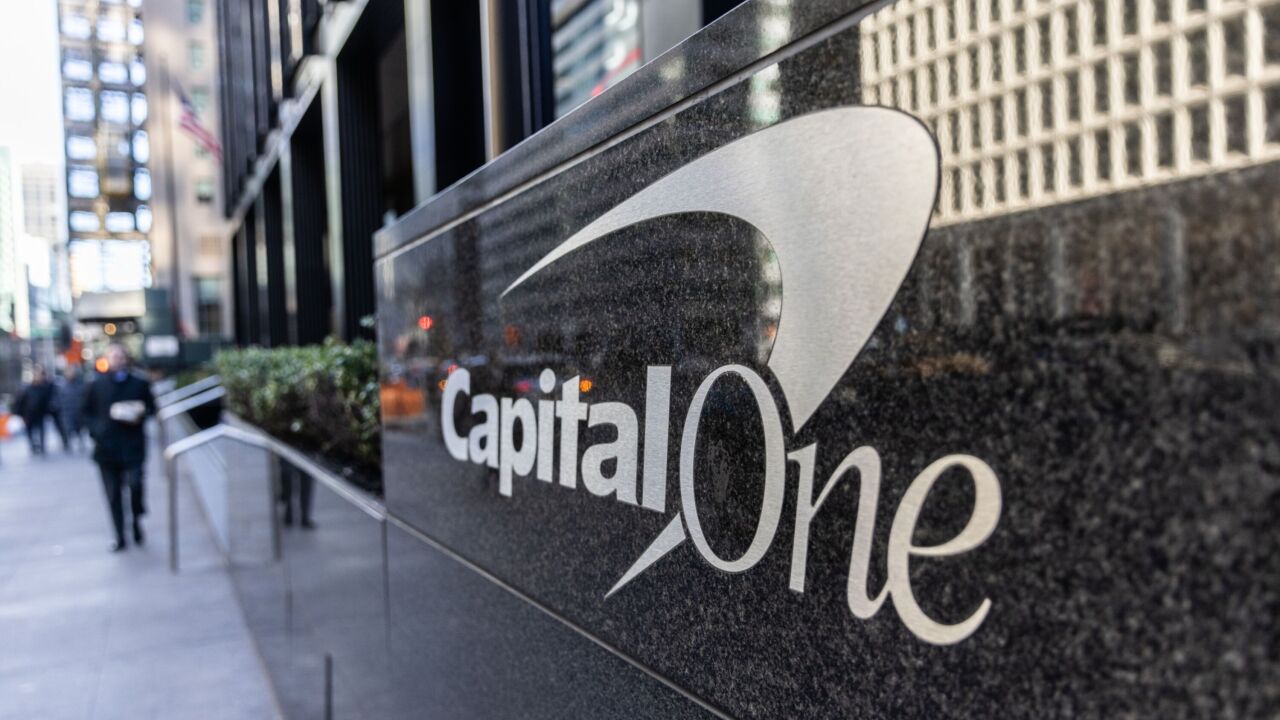Gemalto's latest biometric payment card brings a fair amount of common sense into play. But is it enough to appeal to mainstream cardholders?
The card's owner authenticates through a thumbprint on a sensor in the exact spot on the card on which most people would place their thumb while gripping it for an EMV or contactless transaction. The concept puts an end to signature or PIN authentication — a notion that by now should resonate with all card issuers, merchants and consumers.
But common sense and business sense don't always align, putting Gemalto in a position of knowing that its dual-interface card will have a hard time building an immediate audience.

In debuting its card with the
"It's interesting because the product, theoretically and technologically, is a no-brainer," said Paul Kobos, senior vice president of banking and payments for North America at Gemalto. "People are already using their fingerprints to access their phones and data and to do a transaction through Apple Pay and others."
But a couple of key factors work against a biometric card becoming a standard, Kobos said. Those would be cost and the customer registration process.
"You have to activate the fingerprint at the bank branch through a tablet," Kobos said. "Most larger banks are pushing people to self-service and they don't want customers to have to go to a branch as much."
To that end, Gemalto is working on at-home solutions for storing fingerprint data on the card, such as readers that connect over USB or bluetooth. But that doesn't address the cost banks would incur to issue these cards to a wide audience.
"Cost is definitely going to be a factor," Kobos said. "Cost depends on volume, but in comparing it to a contactless card, it is going to be several multiples of that. The bank is really going to have to believe it will either reduce fraud or the customer perception will be such that they will want to do it."
In the meantime, Gemalto expects there will be niche spots for the biometric EMV card — at larger banks serving wealthy customers who want extra protection, or at smaller banks that would view the fingerprint registration as an opportunity to interact with new customers.
Gemalto expects to conduct pilots in the first half of 2018 and move to full deployments by the end of the year.
Gemalto's concept competes with other ideas for high-tech plastic. Companies like
Still, banks and consumers alike have to be convinced that cards that provide extra security technology are worth the investment.
"I’m quite skeptical about the market potential of these biometric cards," said Julie Conroy, research director and fraud expert with Boston-based Aite Group. "The incremental per-card cost is a key challenge."
In addition, biometric cards "to a large extent are a solution in search of a problem," Conroy added. "EMV very effectively addresses counterfeit card fraud."
Even though a biometric trait essentially replaces PIN, which is prone to fraud, lost/stolen is really the only type of fraud that a fingerprint reader helps with, Conroy said. This category of fraud represents "a pretty small amount of the card fraud pie at less than 10%," she said.
The enrollment process would also be an obstacle for a lot of issuers and it would be especially tough to get consumers in the U.S. to participate, she added.
But Gemalto says that, over time, banks and consumers will develop an interest in a more secure plastic card.
"Banks are good about knowing their customers and they would know where these would make a lot of sense in reissuing to certain customers," Kobos said. "When these cards get into market and more people see them, they will say it really makes sense and they want the better security."





